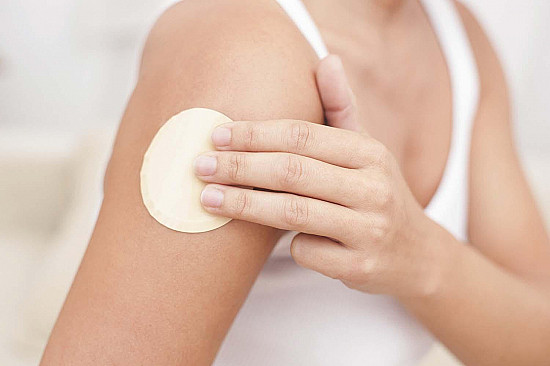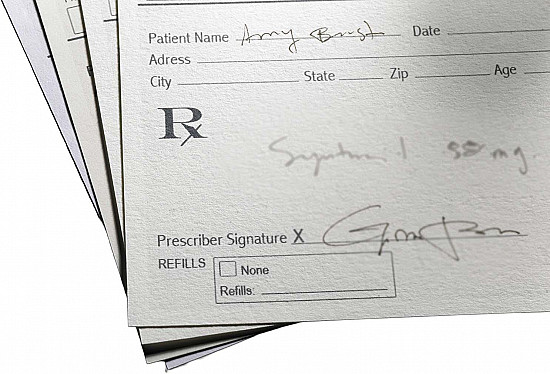Easier ways to take non-pill medications
Certain gadgets can help improve your hold, control, and aim of drugs that don’t come in pill form.
- Reviewed by Anthony L. Komaroff, MD, Editor in Chief, Harvard Health Letter; Editorial Advisory Board Member, Harvard Health Publishing

Sticking to a medication regimen is a challenge for anyone. And it can be harder when drugs come in the form of drops, gels, lotions, injections, sprays, or mists. Those can be tricky to take, meaning you might get an inaccurate dose, especially if you have shaky or weak hands. "Using too much medication might lead to irritation, side effects, or running out of a drug before your insurance will pay for more. Using too little might not be enough to treat your condition," says Joanne Doyle Petrongolo, a pharmacist at Harvard-affiliated Massachusetts General Hospital.
The good news: some medications can be used with gadgets that make taking them easier. Consider the following.
Eye drop guides
Two kinds of devices are commonly used with eye drops. One has large flaps that flank the sides of the eye drop bottle. "You squeeze the flaps together, which is easier than squeezing the tiny bottle," Doyle Petrongolo says.
The other device is a small cup that fits around your eye. The eye drop bottle snaps into the cup, which points it toward your eye and keeps it steady as you squeeze it.
Costs: About $10 to $15.
Injection aids
Giving yourself an injection can be unpleasant, no matter which tools you use. But some gadgets can at least make the process less challenging.
Injection aids fit onto the ends of prefilled injection "pens" that you place on the skin. An aid might look like a small flying saucer or a small arch. When you place the aid on the skin, it stays in place and guides the pen to the right spot.
If your medication comes in a prefilled syringe (such as vitamin B12 or testosterone), or if you load your own syringe, you can put it in an automatic injector, essentially turning it into a more manageable injector pen. "You load the syringe into the injector, place it on the skin, and then press a trigger button to send the needle into your skin," Doyle Petrongolo says.
If you have trouble seeing the dose you’re loading into a syringe, you might try a syringe magnifier, which enlarges your view of the numbers and lines on the syringe.
Costs: About $10 to $25.
Inhaler spacers
Using an inhaler (a device that delivers liquid or powdered medication as a breathable mist through a mouthpiece) takes coordination and lung strength. With one common design, you place the mouthpiece into your mouth, then press down on the canister holding the drug to trigger a spray; meanwhile, you inhale quickly and deeply to suck the medicated mist deep into your lungs. "But for some people, the medication just squirts down the back of their throat or gets blocked by the tongue," Doyle Petrongolo says.
She recommends using a spacer, a tube that fits onto the end of the inhaler mouthpiece. The other end of the tube goes into your mouth. When you spray the medication, it’s suspended in the spacer chamber, allowing you to inhale the mist at a slower pace. "Look for a spacer with a whistle sound that lets you know if you’re breathing in too fast or too slowly," Doyle Petrongolo says.
Cost: $15 and up.
Tube squeezers
Topical medications such as creams or gels come out of a tube easily at first. But it takes more effort as the tube empties. That’s tough if you have hand problems.
A tube squeezer can help. It comes in a few styles, such as a key that you attach to the end of the tube and turn (which rolls up the empty end, pushing the drug toward the opening), or a flat plastic disc with a skinny slot that you place on the end of the tube and slide toward the opening.
If it’s difficult to turn the key or slide the disc, try a one-handed tube squeezer, a wedge-shaped device that you attach to the tube and press to get medication out.
Cost: $2 and up.
Where can you find these tools?
Look for these gadgets in drugstores, big box stores, medical supply stores, or online. If the tools aren’t helping, ask your pharmacist for suggestions, or see an occupational therapist. "The goal," Doyle Petrongolo says, "is keeping you on your drug regimen so you can stay healthy and independent."
Image courtesy of Apothecary Products, LLC
About the Author

Heidi Godman, Executive Editor, Harvard Health Letter
About the Reviewer

Anthony L. Komaroff, MD, Editor in Chief, Harvard Health Letter; Editorial Advisory Board Member, Harvard Health Publishing
Disclaimer:
As a service to our readers, Harvard Health Publishing provides access to our library of archived content. Please note the date of last review or update on all articles.
No content on this site, regardless of date, should ever be used as a substitute for direct medical advice from your doctor or other qualified clinician.
















